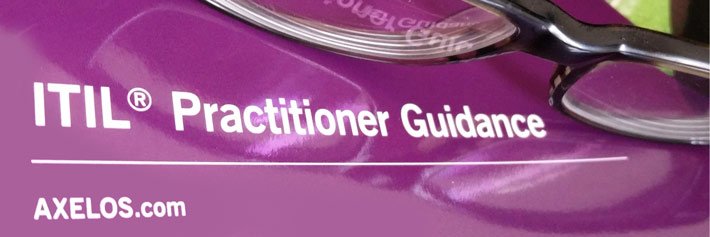
My Next 5 Tips for Using SIAM to Manage Service Complexity
In my previous blog I offered up 5 service and integration management (SIAM) tips (as well as a quick refresher as to what SIAM is). It’s a complex area though, so 5 tips were never going to be enough.
Here are another 5 tips for running your multi-sourced, i.e. SIAM, environment effectively. If you would like more information on the topic, please let me know in the comments section or contact me on Twitter.
Tip 6: Make Your Tools Work for You
A complex, multi-sourced environment needs a cohesive tooling strategy. Most organizations operating in a SIAM environment will already have IT service management (ITSM) tools aligned to ITIL but this may not be enough. ITIL focuses on delivering end-to-end services via the IT service lifecycle approach but provides limited guidance on how to manage suppliers in a multi-sourced environment.
That’s why, as more and more organizations move towards multi-sourced operating models, SIAM best practice is emerging and evolving, and the ITSM and SIAM tools universe is expanding to support the greater complexity. For instance, offering much-needed integration functionality as organizations opt the flexibility afforded by working with multiple vendors and partners.
When looking at tool usage in a SIAM environment, consider the following areas to make sure you have the right capabilities in place:
- Incident management routing and resolution – and having one common model for all suppliers and partners so that incidents can be handled consistently.
- SLAs – with each service having one end-to-end SLA that covers the entire service across all providers.
- Service request management – linked to a central service catalog.
- Change management – with the contractual definition of a change, scope, and how approvals are managed.
- Problem management – aligned with incident management and using models so that problems can be logged, progressed, and resolved efficiently and effectively.
- Knowledge and configuration management – capturing the information around how each service is managed and run.
- Reporting – to get an overall understanding of how the service is performing and to ensure things stay on track.
Tip 7: Get Your Sourcing Processes Right First Time
Selecting and contracting service providers can be a complex process, so use the following checklist as a structure to cover the basics (and to stop some people and roles becoming overwhelmed):
- Stick to your agreed scope – and setting out the exact responsibilities of the service providers in a clear way that prevents confusion.
- Use third-party SIAM advice – subject matter experts (SMEs), such as Syniad IT, who can provide guidance and templates for RFI/RFP questions, statements of work, and contractual terms and conditions.
- Create a service framework – ideally using a business service catalog that defines the way IT services will be delivered to the organization.
- Understand cost drivers – bear in mind the number of parties concerned, how requirements can be customized (and the impact on costs), and how contract negotiations will be managed.
- Use your RFIs and RFPs consistently – have a standard bank of questions and templates in place so you can compare potential suppliers on equal terms.
- Approach contract negotiations and signing in the manner you wish for future operations – build in a culture of honesty, collaboration, and trust so that when there are tough subjects to discuss or difficult decisions to be made, then issues can be addressed in an open and honest way.
- Manage transition and transformation with governance – ensure that projects and programs are executed in a controlled way.
Tip 8: Sweat the (Contract) Details
When you have multiple suppliers, vendors, and third parties you’ll also need contracts that will underpin your existing SLAs and OLAs at a vendor level. These contracts should contain the following information to ensure that everyone is on the same page as to what is expected of them:
- Reversibility and exit plans – Is there a period of vendor lock in? Will knowledge and data be able to be transferred back to the retained organization at the end of the contract? Are break points in place in case of persistent failure to meet contractually agreed levels of service?
- Statements of work – Are the contractual descriptions of the services being provided sufficiently detailed?
- Pricing and chargeback – What pricing models will be used? Fixed price? Time and materials? Make sure that whatever model you chose is clearly set out and understood by all.
- Invoicing and penalties – Clearly set out how financial penalties (for underperformance) will be triggered and who is authorized to trigger them.
- Service levels – with these based on a cascade of goals such that each involved party knows their role in the overall provision of service.
- Management of operational data – agreeing who has overall ownership of the operational data. In an ideal world the customer will own the data as they are paying for the service.
- Intellectual property – having the appropriate clauses in place to protect the rights of both sides (in terms of innovation) and if the provision for any special circumstances is needed.
Tip 9: Agree Governance Requirements Early On
Multiple parties and entities interacting within a single ecosystem means that multiple layers of governance will be needed.
When working in a SIAM environment, governance is best visualized as a recursive model where each service provider manages their own activities but having a strong sense of alignment with the rest of the partners in the service model.
That’s why I’d recommend building a suitable governance framework at the outset so that escalations are quick and effective when incidents, say, stall, and also so that role clarity is in place.
Tip 10: Plan for CSI
Services evolve over time, so have a common approach for continual service improvement (CSI) across all the suppliers in your SIAM model.
Aspects to consider when figuring out your CSI approach include:
- Prioritization techniques – how will potential improvements be rated and prioritized when they affect costs, speed, and outcomes in different ways?
- Reviewing value – does an improvement proposal deliver increased business value, enabling new markets or creating new revenue streams?
- Costs – does a proposal reduce the overall running costs of the organization? What’s the impact on IT costs?
- The creation of a CSI register such that each improvement can be transparently prioritized, tracked, and managed over time.
By building a CSI capability and culture into your SIAM model, you’re making a powerful statement – you’re putting quality and improvement at the center of everything. Not only creating a safe environment for third parties to try new ideas but actively championing them to do so. And thus, everyone wins.
What would you add to my 10 SIAM tips? And what one thing made the most difference to your organizations? Please let me know in the comments!






